The Washington Monument
Introduction
Author-Uploaded Audio
Clio founder and historian David Trowbridge offers an introduction to the Washington Monument
Text-to-speech Audio
Perhaps the most iconic monument in the nation's capital, the Washington Monument honors America's first president, George Washington. The monument dates back to 1833 when the National Monument Society began raising funds for the completion of this and other monuments. The Society ran out of funds in 1856, leaving the base of the monument unfinished until 1876, when construction resumed. The monument was completed in 1885. In the early 20th century, the monument became the centerpiece of the National Park Service's National Mall and Memorial Parks. Discerning visitors will notice that the base and the top of the monument feature slightly different colors of stone, something that reflects the two different phases of construction. The two decades when construction was paused created a situation where the original quarry was not available for the second phase.
Images
The monument prior to the addition of a security screening area.
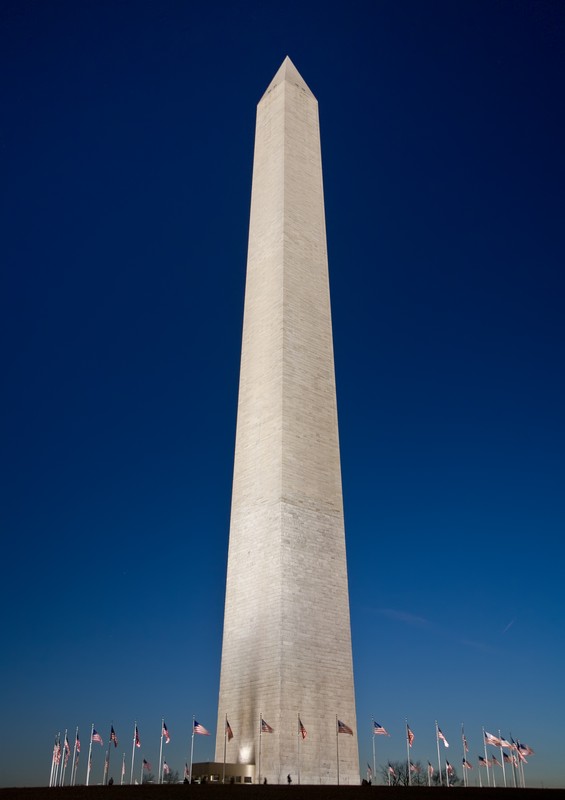
The unfinished Washington Monument in 1860. Photo taken by Mathew Brady.
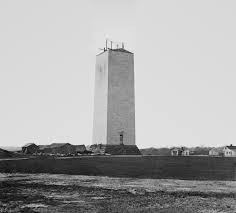
Protesters during the Vietnam War surround the Washington Monument.
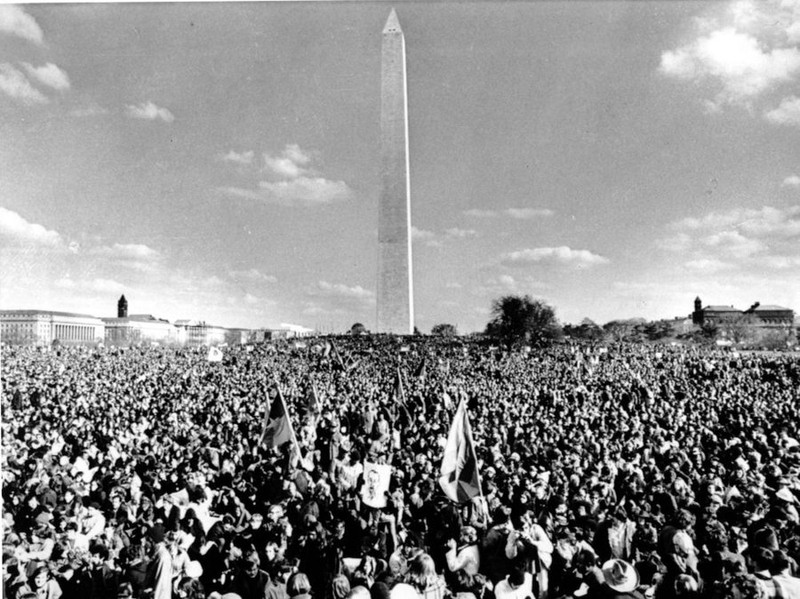
Ron Chernow, Washington: A Life-Click the link below to learn more about this Pulitzer-prize wining biography

Visitors examine the City of Washington's memorial stone in the Washington Monument. Photo circa 1922, courtesy of the Library of Congress.
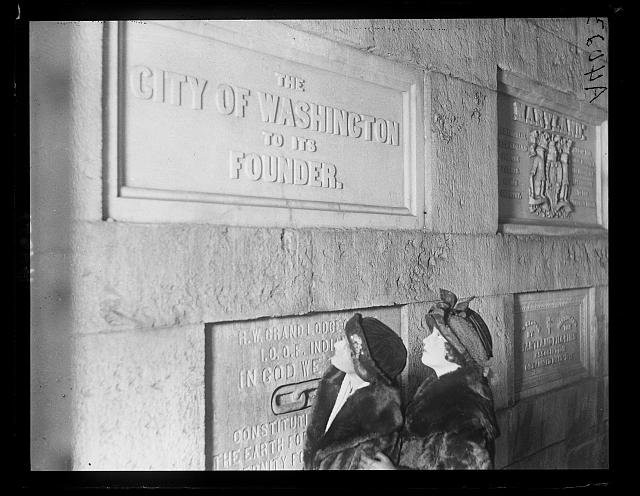
Protesters during the Vietnam War surround the Washington Monument.

The Washington Monument undergoing restorations in the 1930s. Photo courtesy of the National Park Service.
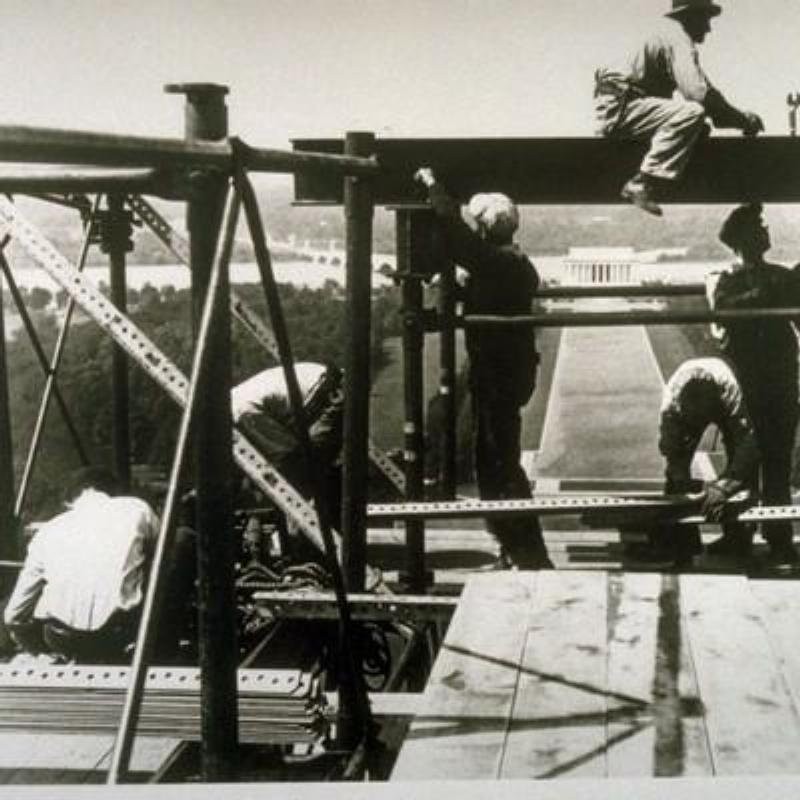
Contractors assess damage to the Washington Monument after the August 23, 2011 earthquake. Photo courtesy of the National Park Service.
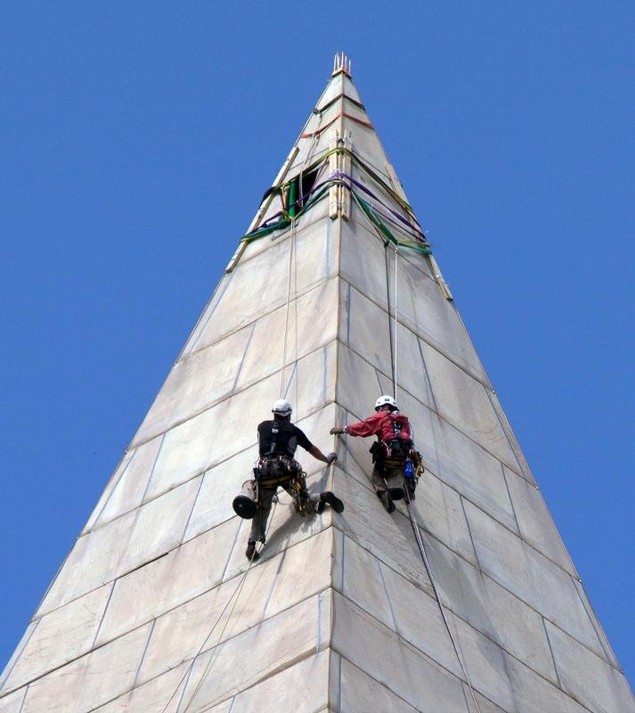
Ron Chernow, Washington: A Life. Click the link below to learn more about this Pulitzer Prize winning biography
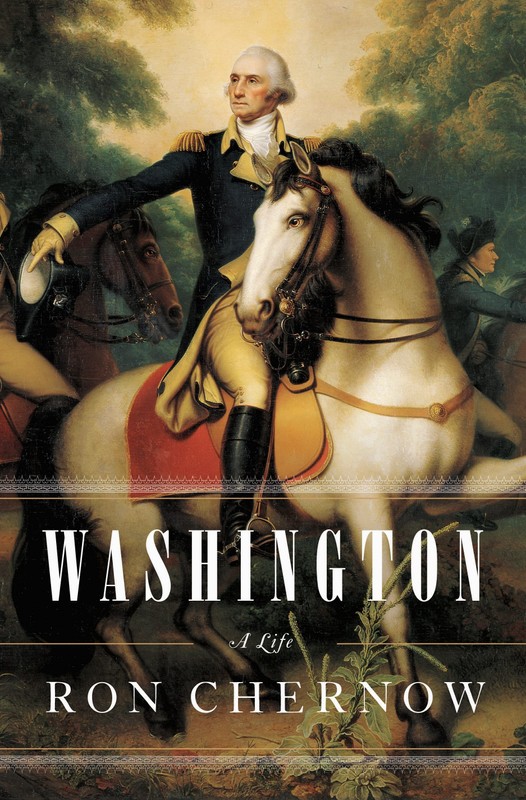
Backstory and Context
Text-to-speech Audio
Following his leadership as the commander of the nation's military forces in the Revolutionary War, and his leadership of the Constitutional Convention, Washington received the unanimous support of the first Electoral College and became the first American President. In this role, Washington shaped the Presidency and established many of the expectations for future presidents.
The Washington National Monument Society (WNMS) proposed the idea of a monument that would be unlike any other in the world. After considering several designs, the organization selected a plan submitted by Robert Mills that called for a 600-foot Egyptian obelisk flanked by thirty 100-foot columns. The committee selected a site on what would become the National Mall directly south from the White House and west of the Capitol. At the time, much of the land south and west of the monument were wetlands. The location and size of this monument would later dictate the shape of the National Mall, especially after the Core of Engineers
The cornerstone for the project was laid on July 4th, 1848. The event was one of the most spectacular events, with notable guests in attendance, including President Polk and the wives of James Madison and Alexander Hamilton. Workers toiled to create the foundation of the monument, an 80 foot square-step pyramid structure. Once this task was completed, the builders turned their attention to building the above-ground marble structure. They used a system of pulleys, a block and tackle system, and a mounted derrick to push stones to workers who completed each section. The WNMS also invited states, cities, and organizations to design memorial stones to help build the monument. They received 193, some of which are now visible through the elevator windows. By 1854, the monument was 156 feet above the ground.
A new group within the Know-Nothing Party took control of the WNMS, a change that proved a detriment to the monument’s progress. This new alignment alienated potential donors, and the already struggling Society was forced to file for bankruptcy. These events put the construction of the monument on hold. Congress tried to offer financial aid, but the nation was soon embroiled in the Civil War. During a period known as Reconstruction, government leaders focussed on the status of formerly enslaved persons and the readmission of former Confederate states. This monument became a literal symbol of the period, with the construction of a national monument to a leader who was revered by both Northern and Southern leaders serving as a symbol of hope. Congress took control of building the monument through a joint resolution on July 5, 1876.
The US Army Corps of Engineers, headed by Lt. Col. Thomas Lincoln Casey, was tasked with completing the massive project. The new leadership decided the base could not support the weight that would need to be added to reach the monument's planned height. As a result, the Corps of Engineers began reconstruction by adding more stone to the base, a process that lasted four years. Attaining the quantity of stone to complete the monument was another challenge. The quarry in Baltimore that was used for the base could not provide the needed quantity, so engineers looked elsewhere and selected a quarry in Massachusetts. A series of irregular deliveries and some inconsistent stone color caused concern, but builders continued until a third quarry was selected. The monument was completed with stone from Baltimore, and while the stone colors are close, they do not match perfectly. The three types of stone used are marble, granite, and blue gneiss. The color changes at about two-thirds up the monument.
During construction, some of the original plans for the monument were abandoned. For example, the ornamentation intended to adorn the base of the obelisk was canceled for simplicity. The monument stands at 555 feet instead of 600 feet, a decision that reflected a change from nine-inch walls instead of the original thirteen inches.
The memorial was completed and dedicated on February 21, 1885. An iron staircase was added later, and the monument opened to the public in 1886. An electric elevator was added in 1901 to shorten the trip to the top of the obelisk. On the aluminum cap which covers the capstone, there are names and dates of the monument’s construction inscribed as well as the Latin phrase “Laus Deo” meaning “Praise be to God." Beginning in the 1920s, American flags appeared around the monument for celebrations and special occasions. In 1958, flagpoles were permanently installed. Fifty flags representing each state have flown continuously since 1971.
The Washington Monument has since become a major tourist attraction and an iconic symbol for the country. Visitors to Washington, D.C., flock to the monument, which offers astounding views of the Lincoln Memorial, Reflection Pool, Jefferson Memorial, and the Capitol Building. It has also been the site of many protests and events since its opening. For example, protesters during the Vietnam War and Korean War came to the monument to demonstrate against US involvement in those conflicts.
The Washington Monument has undergone numerous restorations to clean, repair, and stabilize this important historic icon. On August 23, 2011, A 5.8 magnitude earthquake struck 90 miles southwest of Washington, D.C., causing damage to the Washington Monument walls and stability. The National Park Service gathered teams of engineers and architects to repair the structure using a blend of high-tech science and centuries-old masonry techniques. The monument's interior was closed for a period to renovate the interior and reopened in 2019.
Sources
National Park Service. "Washington Monument." National Mall and Memorial Parks. Accessed September 2017. http://www.nps.gov/wamo/historyculture/index.htm
Images:
Brady, Mathew. "Washington Monument as it stood for 25 years." Glass Negative. Circa 1860. Library of Congress Prints and Photographs Division Washington, D.C. Accessed September 2017. https://www.loc.gov/item/brh2003004928/PP/
Harris & Ewing. "Washington Monument, Washington, D.C." Glass Negative. Circa 1922. Library of Congress Prints and Photographs Division Washington, D.C. Accessed September 2017. https://www.loc.gov/item/hec2013011974/
National Park Service. "Image IMG0016a." Photo. 1930s. National Mall and Memorial Parks. Accessed September 2017. https://www.nps.gov/media/photo/gallery.htm?id=CC677F00-1DD8-B71C-0776DBBB4B865F35
National Park Service. "September 28th Rappelling Assessment 4." Photo. 2011. National Mall and Memorial Parks. Accessed September 2017. https://www.nps.gov/media/photo/gallery.htm?id=319F3589-1DD8-B71C-07B4952F597F9238
